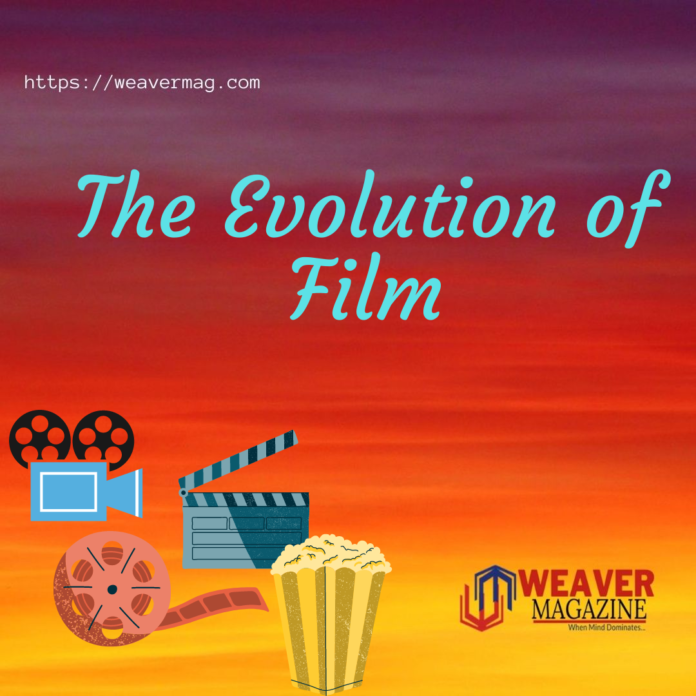Film, a motion picture that presents stories, events, life on screen. Film itself is a work of art invented by one’s creativity and projected as entertainment, or simply to convey messages.
Over the years, motion pictures had been developed gradually from the carnival innovation to what has developed to be among the most noteworthy forms of communication and entertainment in the modern world. (UKEssays, 2018) The existence of film has made a great impact throughout the nation, though people might not realize how greatly film has improved. Alas, the appreciation towards film has gradually decreased as people in this era have not experienced the olden days when film was first projected. This suggests that the histories of film are so underrated and out of touch by most of the younger generation.
As the Athenian philosopher, Plato once said, “The beginning is the most important part of the work”.
Indeed. Through the discovery of the art of photography in the 19th century, photographers were anxious to find a way to capture movements. The first person to make significant advances in less than half a century is Edward Muybridge. Using a machine called zoopraxiscope, Muybridge managed to exhibit a series of moving images. However, Muybridge merely used this creation to make hundreds of chronophotographic studies real-time instead of artistic purpose. Chronophotographic is regarded as a serious, scientific method to study motion exclusively involving humans and animals performing a simple movement in front of the camera (Latsis, 2015). Thus, despite the historical importance in the development of technology, Muybridge’s creation using the zoopraxiscope is rather foreign to film as we understand it. Nonetheless, this had given humanity a step closer to the birth of film as an artform.
The birth of film as an artistic medium can be pinpointed competently to 1895, with the first public screening of ten of Lumiere brothers’ one-minute single shots being the breakthrough of projected cinematographic motion pictures.
The film that has all the tribute to earn it the accolade of being the first film is ‘L’arrivée d’un train à La Ciotat’ , which can be translated as ‘Arrival of a Train at La Ciotat’ (1896). It was presented to a large paying audience. This initial breakthrough of film as an artform had also entailed the discovery of cinematograph, which consists of a portable motion picture camera, a film-processing compartment, and a projector. (UKEssays, 2018)
However, according to the Guinness Book of Record, it was recently discovered that Roundhay Garden Scene, which was shot by French inventor Louis Le Prince (1888), was probably the earliest surviving motion picture (Norman, 2021). In the following year, William K.L. Dickson and William Heise (Martea, 2017) had shot the first film in the United States – Monkeyshines, No.1 (1889). It is the first surviving experimental films Edison’s group produced. Although these are all raw pieces, they all share two significant elements that are lacking in Muybridge’s work. The first would be the continuous shot made instead of cyclical sequence. Subsequently, there was also the occurrence of certain emotional experiences to the films that are potentially ideological in essence.
The work of Muybridge, Marey, and Le Prince laid the foundation for future development of film,
allowing the art of motion pictures to grow into full maturity in the silent era. Prior to 1927, most motion pictures were produced without synchronized recorded sound, in particular, no audible dialogue. However, the term “silent film” is quite misnomer as it is accompanied by live musicians in orchestra, theatre organ and sound effects to enhance the audience’s experience. To provide dialogue and narration for the film, filmmakers used intertitles, allowing them to better understand a film’s true intention. Moreover, silent film actors often emphasized body language and facial expression so that the audience could better understand what an actor was feeling and portraying on screen (Johannes, 2004). The most famous silent films include Ben Hur (directed by Fred Noblo), The Gold Rush (directed by Charlie Chaplin) and Un Voyage A La Lune (directed by Georges Méliès). Three-point lighting, the close-up, long shot, panning, and continuity editing all became prevalent long before silent films were replaced in the late 1920. However, despite being the pioneering one from a technical point of view, there remains a widely held misconception that silent films were primitive, or barely watchable by modern standards.
According to Jordan Kushins (2016), numerous experimental attempts were made to successfully merge both audio and visual entertainment – with nearly 40 different varieties.
In 1927, the projected cinematographic motion pictures had made a significant breakthrough, with the first known public exhibition of projected sound film – The Jazz Singer. Unlike silent films, sound films include synchronized dialogue. Thus, critics had given the name “talking pictures” or “talkies” to sound films. Sound films are recorded in Vitaphone, which according to Kushins, is a sound-on-disc that involves the painstaking process of recording all audio onto a single phonographic record, then syncing that up in real time with the projection. However, the sound in films of the 1970s were only emitted from a single channel or speaker, which was based in front of the theatre. Thus, George Lucas had teamed up with technicians from Dolby to engineer Dolby Stereo. This significant collaboration was a near-instantaneous revolution as four channels emitted sound effects instead of one. (Kushins, 2016)
Needless to say, filmmakers had used a simple homogenous photographic emulsion to capture motion pictures back in the olden days.
This emulsion yielded a black-and-white image. Thus, light, shades, form and movements were all captured, but not colour. However, the era of black-and-white films soon came to an end when George Mieles employed 21 women at his Montreuil studio to hand-colour his films frame by frame, being the pioneer of the coloured film era. Segundo de Chomón invented one of the most accurate and reliable stencil colouring systems – the Cinemacoloris process, after realising that hand-colouring was not cost-effective and time consuming. With the advent of the feature and the conversion of the industry to mass production during the 1910s, film tinting began to emerge. This irrelatively inexpensive way of producing coloured films – tinting or toning, involves dyeing the entire frame of a shot or sequence to match the shot’s mood or activity. By the 1930s, Technicolor Corporation managed to go through a three-strip subtractive process that required a very expensive and temperamental camera through which three strips of film ran simultaneously. (Sklar, 2020)
To summarize all that is above, films have improved drastically over the years.
Films used to be just monochromic back when it was first produced. As we enter a high-tech era, 5D production had replaced monochromic. Such evolution has allowed audience to sit in the theatres and experience film with full of enthusiasm. Though it takes many years to reach this stage where we are at now, imagine how film would be present in another 100 years, for humanity’s creativity and knowledge will never die out. The evolution of film is always interesting to watch.










